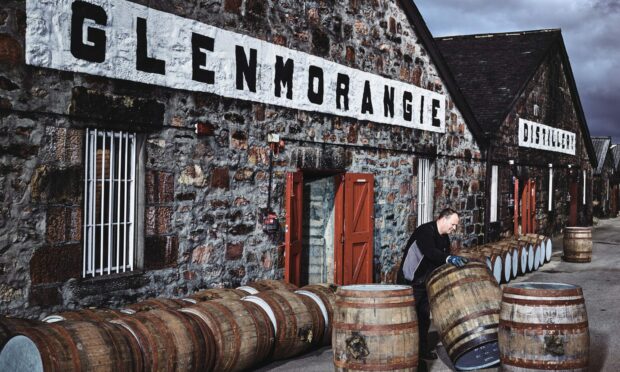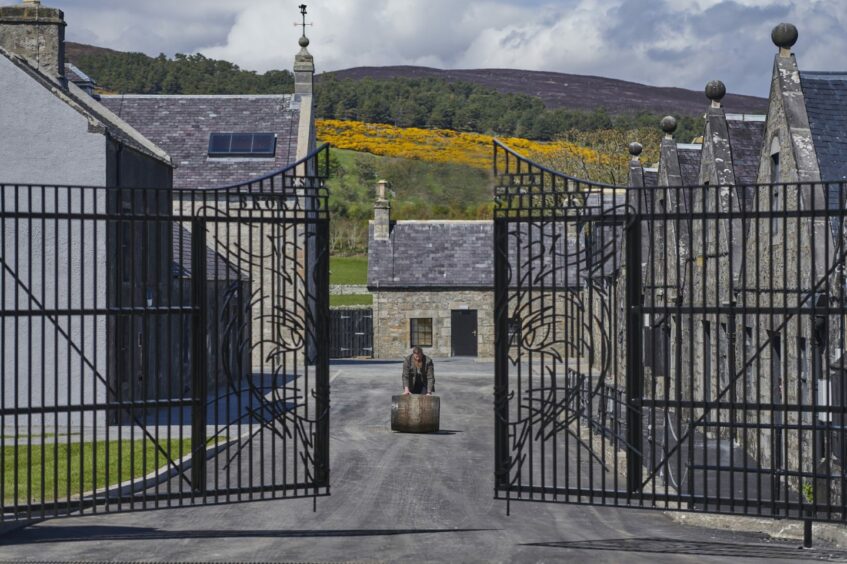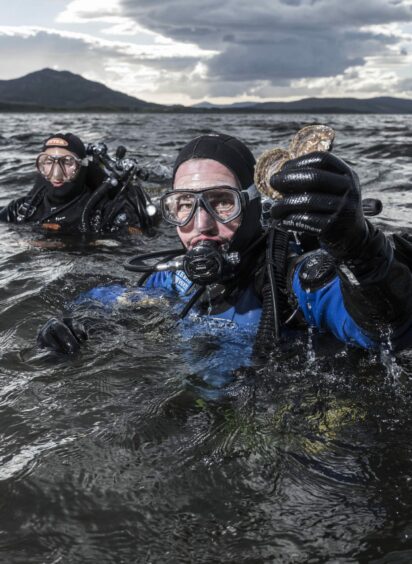Scotch whisky firms Diageo and The Glenmorangie Company have sustainability high on their agendas.
Diageo’s Society 2030 Spirit of Progress plan is an ambitious global sustainability programme for a decade of action, accelerating to a low-carbon world.
It includes stretching goals for the drink giant to have net-zero carbon emissions from its direct operations globally by 2030, as well as targets on water use and packaging.
It is vital that we act now if we want to maintain the wonderful world we all live in.”
Ewan Andrew, chief sustainability officer and president of supply and procurement, Diageo.
Diageo says there is still a long way to go on the journey but action is already clear to see in Scotland, with a range of projects starting to deliver on the commitment to the environment.
The business now has 30 distilleries the length and breadth of Scotland.
Three of the company’s single-malt distilleries – Brora, Oban and Royal Lochnagar – have already achieved net-zero carbon emission status by converting to renewable energy sources for their power.
And at Diageo’s packaging plant in Leven, Fife, planning permission has been granted to build a 9,000-panel solar farm.
This will be capable of generating up to 22% of the facility’s annual electricity needs and as much as 60% over summer months.
The solar array is expected to be one of the largest of its kind in Scotland, producing 4.1 megawatts of electricity – enough to power 2,500 homes for a year – and reducing CO2 emissions by about 830 tonnes annually.
Leven is the bottling site for Diageo’s portfolio of single-malts, as well as global brands such as Johnnie Walker whisky, Smirnoff vodka, and the Tanqueray and Gordon’s gins.
In packaging, the company has taken bold steps to reduce its footprint by committing to phasing out cardboard gift cartons from its premium Scotch portfolio.
Diageo has also partnered with glass manufacturer Encirc and industry research and technology body Glass Futures in a ground-breaking trial to use waste-based biofuel-powered furnaces to reduce the carbon footprint of the bottle-making process by up to 90%.
But the group’s commitment goes beyond its direct operations and supply chain. The company is determined to enhance Scotland’s beautiful natural environment for future generations to enjoy.
Mammoth tree-planting mission
Johnnie Walker will plant a million trees by 2025, with a focus on planting the right trees – diverse indigenous species – in the right places.
The world-leading whisky brand has also partnered with the RSPB to restore and conserve a crucial area of peatland at An Lurg, high on the Cairngorm plateau in the Abernethy National Nature Reserve.
Ewan Andrew, Diageo’s chief sustainability officer and president of supply and procurement, said: “It is vital that we act now if we want to maintain the wonderful world we all live in.
“I’m proud that we have already halved our own carbon footprint and that we are going to push ourselves further by becoming carbon neutral by 2030.”
Meanwhile, The Glenmorangie Company says it has had to take a creative approach to cutting its carbon footprint.
This is because its two whisky distilleries – Glenmorangie, near Tain, and Ardbeg, on Islay – are both in rural areas off grid from mains gas.
Five years ago the firm commissioned an anaerobic digestion plant to clean Glenmorangie Distillery’s wastewater. This also generates biogas, which now contributes 17% of the energy needed to run the site.
The company has also pioneered a project called Deep (Dornoch environmental enhancement project) in partnership with Heriot-Watt University and the Marine Conservation Society.
This environment-friendly scheme is restoring globally-endangered native oysters to the Dornoch Firth, where they had become extinct a century ago.
Oysters are natural water filters, so their presence cleans the water in the firth, while oyster reefs help to improve biodiversity and store carbon.
About 30,000 oysters have been introduced to date. The aim is to reach 200,000 by 2024 and create a sustainable reef of four million oysters in the area in the next five years.
In addition, Glenmorangie is working in partnership with other distilleries on projects including new hydrogen energy trials and seeking out new forms of sustainable energy.
One of these initiatives is an on-site methanation study to understand the feasibility of combining hydrogen and the CO2 generated from fermentation to produce biomethane. There is also funding to develop new heat pump technology.
And at the company’s bottling facility in central Scotland, Glenmorangie is currently undertaking a multimillion-pound investment in its operations – doubling its production capacity, while transforming the site into a green energy plant. It has installed a new solar array installation which will reduce energy consumption by 30%.
Looking to the next 200 years
Glenmorangie operations director Peter Nelson said: “We’ve existed for 200 years and are thinking of the next 200. So, when it comes to sustainability and climate change we are ambitious in what we do.
“It’s not about just limiting the damage or maintaining the status quo – it’s about improving our contribution, and making our environments and communities better for future generations.
“We have key projects already in motion or completed at our sites, including the installation of an anaerobic digestion plant at Tain and our solar array at Livingston.
It’s not about just limiting the damage or maintaining the status quo – it’s about improving our contribution.”
Peter Nelson, operations director, The Glenmorangie Company.
“However, climate change is a challenge that requires more than the sum of individuals’ contributions. We need large-scale infrastructure and collaboration.
“Taking our main ingredient – malted barley – as an example, it will take massive collaboration between industries, farmers and scientists to create and scale up net-zero barley crops.
“To achieve this we are already collaborating with many scientific, academic and manufacturing partners across the whole spectrum of our business.”
Trade body says whisky firms must ‘go further and faster’ to meet consumers’ green demands






Conversation